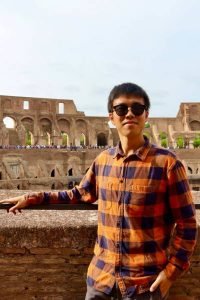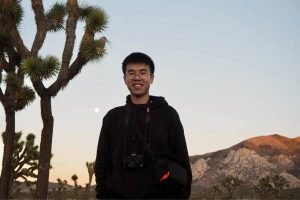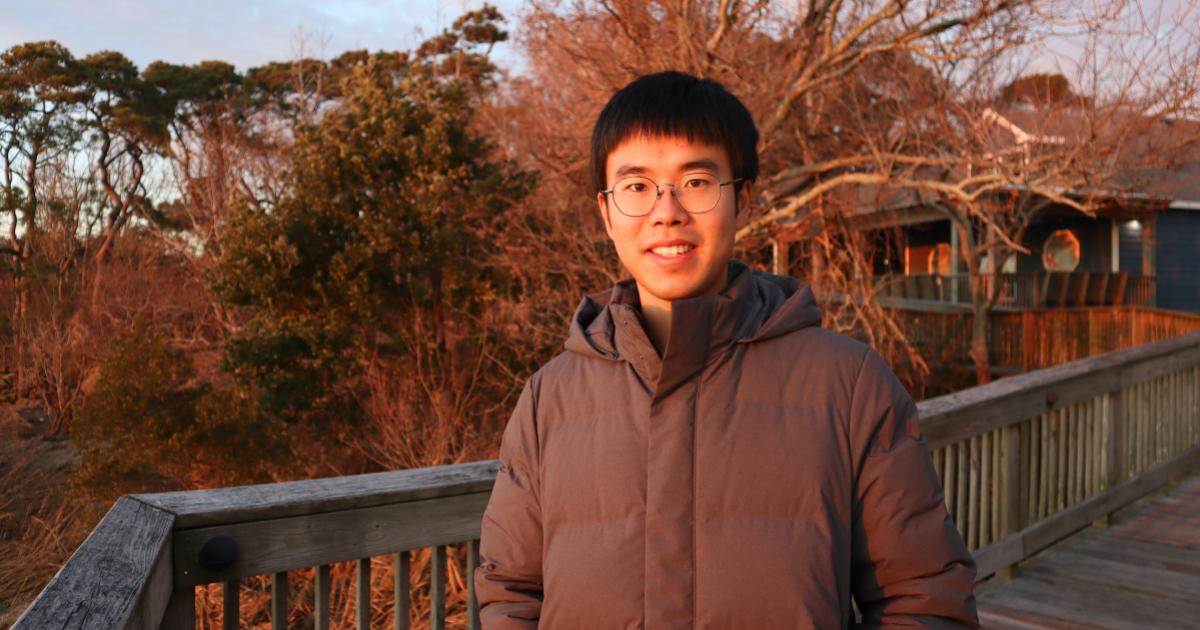Tell us a little about yourself.
[Erjia] I am originally from Xuzhou, a city in Jiangsu, China. I completed my undergraduate studies in Hangzhou, China and then moved to the U.S. to pursue a PhD in Biostatistics. Growing up, I enjoyed reading, biking, and playing table tennis. Since moving to the Twin Cities a year ago, I’ve been able to reconnect with these activities. Biking is very accessible here, and we have table tennis set up in the Biostatistics & Health Data Science office space, allowing me to enjoy games with faculty, staff, and students during our free time.
What drew you to the field of public health?

[Erjia] My parents were both math teachers, and they helped foster my appreciation for numbers, which led me to study statistics during undergrad. However, I soon realized that I wanted to do more than just work with numbers; I wanted to apply my statistical knowledge to make a difference. This led me to pursue a PhD at the Johns Hopkins School of Public Health. There, I gained a deeper understanding of how to leverage my background to improve population health and well-being.
How are you applying your mathematics knowledge to solve public health issues?
[Erjia] I study mobile health research with a specific focus on wearable device technology. These wearable devices, like smart watches, have exploded in popularity over the past two decades and have immense potential to revolutionize healthcare delivery. They collect continuous, high-quality data, making them very useful for personalized health care. However, the vast amount of data generated by these devices poses significant analytical challenges. To address this, I develop functional data analysis methods that model the entire trajectory of the data instead of simply taking summary measures. By applying these methods, we have found that physical activity is one of the strongest predictors for health – sometimes even as strong as age. This insight allows us to develop meaningful interventions that put their users on a trajectory for better health. This is really incredible when you consider how wearable devices were relatively unknown ten years ago.
My favorite part about working with students is talking to them about their ideas. So many students come in with brilliant and innovative ideas that exceed my expectations! I genuinely enjoy the exchange of ideas with them; I don’t see students as someone I just ‘assign tasks to.’ I know I have something to learn from them.
What projects are you currently involved in with wearable device technology?
[Erjia] I am currently collaborating with colleagues from the School of Nursing on a physical activity intervention study. Our goal is to promote physical activity among older adults in the Twin Cities metropolitan area through various interventions. Each participant in the study is equipped with a wearable device that tracks their physical activity in real-time, allowing us to gather valuable data and monitor progress during and post the intervention.
What is your favorite part about working with students? What programs have you worked on with students?
[Erjia] My favorite part about working with students is talking to them about their ideas. So many students come in with brilliant and innovative ideas that exceed my expectations! I genuinely enjoy the exchange of ideas with them; I don’t see students as someone I just ‘assign tasks to.’ I know I have something to learn from them.

What is one interesting thing about yourself that might surprise your colleagues or your students?
[Erjia] The first thing that comes to mind is that I use my left hand just as frequently as my right but for different things. So I don’t know if I have a dominant hand like most people do. Between writing, using utensils, playing table tennis, or anything else that involves using one hand, I alternate between the two.
What do you do when you are not working?
[Erjia] I love trying new food! The restaurants in Minneapolis are awesome. As a statistician, it is hard to choose one favorite restaurant. But I really like Tea House, SideWalk Kitchen, and eM Que Viet. I also have been enjoying some of my lifelong hobbies, including riding my bike and reading. One of my current favorite books is Chronicles of the Eastern Zhou Kingdoms, which is a very long, but good read.

